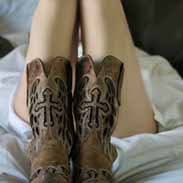Mic 230 – Microbiology Answers – Flashcards
Unlock all answers in this set
Unlock answers| Beadle and Tatum won the nobel prize for what? when? what org? |
|
| Lederburg and Tatum discover what? when? in what org? |
|
genome? gene codon operon? |
|
| Gene structure in order from start to finish? 7 things |
|
| Operan structure contains many? |
| ORF's |
| 3 components of a nucleotide? |
|
pyrimidine bases purine bases |
pyr - CTU Pur - GA |
| what is the difference between Deoxyribose in DNA and ribose in RNA? |
| ribose in RNA has a OH group on the 2' carbon |
| fxn of major and minor groove? |
major - makes bps visible to extracellular proteins to detect sequence minor - RNA pol binds to it |
| what style is DNA replicated in? |
| semi-conservative - two strands seperate and make two identical double helix strands |
| where does replication start? |
| origin |
key enzymes fxn: DNA polymerase Ligase Helicase single stranded binding proteins Primase |
|
| RNA polymerase |
|
role of sigma factor in transcription? ; |
|
| aminoacyl-tRNA synthetase |
|
| steps in translation? |
|
| what are introns located in? |
DNA and priimary RNA removed in mature mRNA |
| 3 substitution mutations |
|
| 3 other mutations? |
|
| 2 ;causes of mutation |
|
| 3 types of induced mutagens? |
|
| 3 repair mechanisms of damaged DNA: photoreactivation; excision repair; SOS repair |
|
| auxotroph? |
| mutant that is deficient in the biosynthesis of an essential metabolite |
| replica plating procedure? 5 steps |
|
| what does the Ames test test for? method? |
|
Homologous recombination site-specific recombination? |
HR - requires long regions of homology and the RecA protein. single or double strand can be exchanged. Site Sp - requires only a short region of homology and doesnt need the RecA protein. |
| 3 types of gene transfer? |
|
| transformation is? discovered with what exp? when? |
|
| what is the transforming factor? |
| The DNA responsible for transformation |
| steps of transformation? |
|
| How can bacteria become artificially induced to transform and become competent? |
|
| benefits of transformation? |
|
| conjugation is? discovered by? when? where? in? |
|
| plasmid? structure? |
|
replication of Plasmid? 2 types
|
|
| 4 types of plasmids? |
|
| how to name plasmids? |
|
| steps of conjugation? |
|
| steps of Hfr Conjugation? |
|
| f-plasmid conjugation |
|
| benefits tools of comjugation? |
|
| what is a virus? |
|
| how were viruses discovered? fist one? |
|
| what are viruses made of?; |
| DNA and proteins |
| What kind of genetic material can be present in a virus? |
|
| capsid structure? |
|
| Virus envelope structure? |
|
| lytic cycle steps |
|
| steps of lysogenic cycle |
|
| retroviruses structure and function?; |
|
| what kind of virus is SARS? |
|
viroid? prion? |
|
| steps of generalized transduction? |
|
| steps of specialized transduction? rare event? |
|
| characteristics of generalized and specialized tduction on chart |
| restriction enzymes? how are they named? |
recognize a 6bp sequence that they cut at to create sticky ends ; name by first letter in genus and first two letters in species E. coli = Eco RI |
| DNA ligase role? |
| covalently bind 3 bp sticky end sequences when they line up |
| 4 types of vectors? |
|
| what did YAC's allow us to do? |
|
| steps in cloning a gene? |
|
| steps of PCR? |
|
| applications of recombinant DNA technology? |
|



